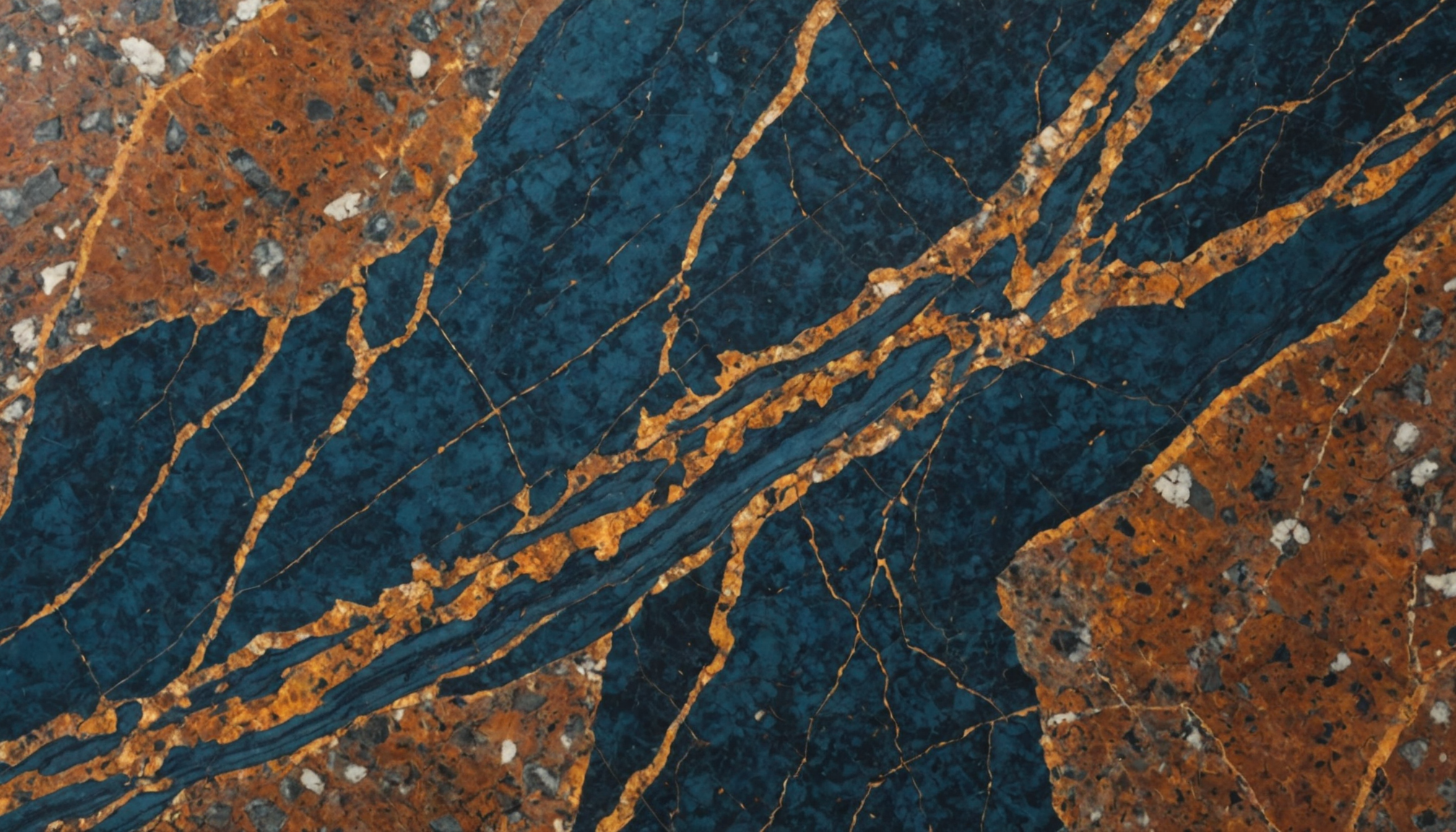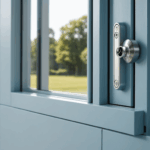When considering a kitchen renovation, a significant factor is the choice between granite and quartz countertops, primarily because the material costs are a major component of the overall countertop installation expenses. A thorough cost analysis of these materials reveals several distinctions that could influence a homeowner’s decision.
Granite, a natural stone, boasts a range of prices based on its rarity, source, and the complexity of slicing and polishing the slabs. Typically, granite prices start around $40 per square foot and can escalate to over $100 per square foot for more exotic varieties. These costs reflect not only the material itself but also the intricate process of quarrying and treating each slab to highlight its unique patterns and hues.
Quartz countertops, on the other hand, are engineered stone, manufactured from quartz particles bound with resins and pigments. This production enables a more consistent appearance and a wider array of color options. The cost ranges from about $50 to $150 per square foot, influenced by the brand, color complexity, and additives used in the manufacturing process. Though initial estimates may suggest a higher price point for quartz, the uniformity and predictability of this material can justify the expenditure for those desiring a specific aesthetic or color match.
The table below summarizes a basic cost comparison between granite and quartz:
| Material | Price per Square Foot (USD) | Characteristics |
| Granite | $40 – $100+ | Natural stone, unique patterns, range of finishes |
| Quartz | $50 – $150+ | Engineered, consistent appearance, variety of colors |
The choice between granite and quartz is not only a matter of cost but also an assessment of personal preference for natural versus engineered materials. While granite might appeal to those who appreciate natural irregularities and exclusive designs, quartz often attracts homeowners seeking uniformity and a wider palette of color options for their kitchen. In making a decision, each individual’s priorities and budget constraints play a crucial role, and understanding these differences is essential for an informed investment in countertop installation.
Installation expenses
When examining the installation expenses for granite and quartz, several key elements contribute to the ultimate cost. These components range from labor fees to additional supplies required during the project. Understanding each aspect can help homeowners effectively budget and prepare for the installation process.
1. Pre-Installation Preparation:
– Measure and Template: Accurate measurements of the kitchen area where the countertops will be installed are crucial. Professional countertop installers utilize templates to ensure a precise fit. This phase includes removing existing countertops, sink disconnection, and addressing any plumbing issues. Contractors typically charge around $100 to $200 for this initial step.
2. Labor Costs:
– Granite: As a natural stone, granite is heavier and often more cumbersome to install, requiring specialized handling to avoid damage. This can lead to a higher labor cost, generally ranging from $35 to $45 per hour. Given the complexity and weight, more manpower is often needed, adding to the expense.
– Quartz: Being engineered, quartz offers a consistent density that simplifies its manipulation during installation. This ease of handling can result in slightly lower labor costs, approximately $30 to $40 per hour. However, the treatment of seams and edges in quartz can still necessitate skilled labor for a seamless appearance.
3. Cutting and Edging:
– Countertop installation requires precise cutting to fit custom spaces and accommodate sinks, stoves, and plumbing fixtures. Additionally, edging styles, whether it be a simple square or a more elaborate bullnose or ogee edge, can impact the overall cost. Standard edge treatments may be included, but intricate designs could incur additional fees ranging from $10 to $50 per linear foot.
4. Support and Reinforcement:
– Granite: To ensure stability, especially for large overhangs or unique layouts, additional supports such as brackets or corbels might be necessary, usually costing between $30 to $100 each.
– Quartz: While quartz generally requires less reinforcement due to its even composition, certain installations may still call for supports, particularly when creating kitchen islands with extended edges.
5. Sealing and Finishing:
– Granite: Requires sealing to protect the stone from stains and moisture, an additional step which adds to the installation cost, ranging from $200 to $500 depending on the size of the project.
– Quartz: Does not require sealing, thereby reducing associated finishing costs and ongoing maintenance expenses.
6. Miscellaneous Expenses:
– Items such as adhesives, caulking, and other mounting hardware can add up, often seen as minor but essential contributions to the total installation expenditure. These materials might contribute an extra $50 to $100 to the overall cost.
In conclusion, while granite may present a higher initial installation cost due to additional requirements for careful handling and reinforcement, quartz may offer savings in both labor and finish. Therefore, a thorough cost analysis of installation expenses, considering the kitchen’s layout and personal design preferences, is crucial for selecting the appropriate countertop material.
Maintenance and durability
When considering the long-term maintenance and durability of quartz and granite countertops, homeowners should conduct a thorough cost analysis that factors in both the lifespan and upkeep of these materials. Understanding the distinctions in maintenance requirements can influence the decision-making process and potentially lead to significant savings over time.
Granite, a natural stone, is renowned for its robustness and resistance to heat, making it an excellent choice for kitchen environments that demand durability. However, due to its porous nature, granite requires regular sealing to prevent stains and moisture penetration. Sealing is recommended annually or bi-annually, depending on the level of use and the type of granite. This necessity incurs ongoing maintenance expenses, but it ensures that the countertop remains pristine and resistant to common kitchen mishaps. Daily cleaning is straightforward, generally needing just mild soap and water, though it’s crucial to avoid acidic or abrasive cleaners that could harm the sealant and the stone’s surface.
Conversely, quartz is an engineered stone composed of quartz particles and resins, yielding a non-porous and highly durable surface. This composition means that quartz countertops do not require sealing or additional treatments to protect them, reducing long-term maintenance efforts and costs. Its non-porous quality also makes quartz highly resistant to stains and bacterial growth, which is particularly advantageous in areas like kitchens where hygiene is paramount. Routine cleaning with mild detergents is sufficient to keep quartz countertops looking new, offering a hassle-free maintenance experience.
In terms of overall durability, both materials boast impressive longevity, though there are some nuanced differences. While granite is resistant to heat, it can chip or crack if subjected to heavy impacts or extreme stress. Homeowners should exercise caution with heavy cookware or utensils to prolong its lifespan. On the other hand, quartz can be more prone to heat damage despite its hardness. Direct placement of hot pots or pans can lead to discoloration or warping, so using trivets or hot pads is recommended to mitigate this risk.
Ultimately, the choice between granite and quartz should weigh the importance of maintenance convenience against the costs. Granite might appeal to individuals who prefer a natural stone look and are willing to commit to periodic sealing for the tradeoff in aesthetic uniqueness. In contrast, quartz offers a low-maintenance, consistent option with substantial resistance to common kitchen ailments, making it an appealing choice for those valuing both durability and convenience. The initial investment in quartz may be higher, but its reduced ongoing maintenance needs could translate into savings over time, aligning with long-term cost-efficiency goals.
Aesthetic considerations
When it comes to the aesthetic appeal of granite and quartz countertops, the decision can profoundly affect the overall ambiance of a kitchen. Each material offers distinct visual characteristics that cater to various tastes and style preferences, making the choice an important part of any countertop installation.
Granite, being a natural stone, captivates with its one-of-a-kind beauty. Each slab of granite is unique, displaying an array of colors, patterns, and textures that cannot be replicated. This individuality is primarily due to the natural veining and speckling patterns that occur as the stone forms over millennia. The result is a countertop that not only serves as a functional surface but also as a stunning focal point of the kitchen, often described as a piece of art. The variation between slabs can be quite significant, and homeowners who appreciate a natural aesthetic will find granite’s organic and unpredictable patterns particularly appealing. Moreover, granite complements a wide range of kitchen designs, from traditional to rustic, adding a touch of elegance and timelessness.
On the other hand, quartz offers a refined and consistent appearance that appeals to those who prefer a more modern or streamlined look. As an engineered stone, quartz countertops are manufactured under controlled conditions, allowing for uniform distribution of color and pattern across the entire surface. This uniformity ensures that the countertop maintains a consistent aesthetic throughout, an attractive feature for those focused on achieving a cohesive design in their kitchen spaces. Furthermore, quartz provides a vast array of color options that are not typically found in natural stones, including bold hues and softer, neutral shades. This versatility in color range can simplify the search for a perfect match to specific kitchen palettes or cabinetry.
Beyond aesthetics, the choice between granite and quartz can also influence perceived luxury and overall home value. Granite, with its storied natural beauty, often conjures a sense of exclusivity and opulence, which can be particularly beneficial in creating a high-end kitchen ambiance. Quartz, although engineered, does not fall short in terms of luxury and often features finishes that replicate the veining found in natural stones, offering the best of both worlds: beauty and practicality.
Ultimately, the selection between these materials should be guided by personal taste and the desired tone of the kitchen space. While granite’s distinct patterns can transform countertops into conversation pieces, quartz offers predictability and color variety that foster seamless design integration. For those in the midst of a home renovation and eager to explore countertop options, considering a visit to LocallyFind.com might be a valuable step. This platform provides access to a variety of local professionals specializing in countertop installations, ensuring that homeowners find expert advice tailored to both their aesthetic and functional needs.
Long-term value and resale potential
Assessing the long-term value and resale potential of granite and quartz countertops is a crucial component of any cost analysis for kitchen renovations. When weighing the benefits of these materials, it’s essential to consider how they might influence your home’s overall value and appeal to potential buyers.
Granite has long been revered for its timeless elegance and natural allure, qualities that often enhance a property’s allure to potential purchasers. The uniqueness of each granite slab can make a kitchen stand out, acting as an exclusive selling point. Its reputation as a premium material can lead to a positive impact on resale value, especially in upscale market segments where buyers are willing to pay a premium for natural finishes. Moreover, granite’s durability and ability to withstand heat and physical wear make it a practical investment, ensuring it retains its beauty and function for years, which is appealing to savvy, long-term buyers.
Quartz, equally popular in contemporary home design, is known for its practicality and consistency, attributes that resonate well with modern homebuyers. Being non-porous and resistant to staining and bacteria, quartz countertops promise low maintenance and longevity. These aspects are increasingly attractive in today’s fast-paced lifestyles where convenience is paramount. The diverse color palette and ability to mimic the appearance of natural stone enable quartz to fit seamlessly with various kitchen styles, appealing to buyers with differing tastes. Homes featuring quartz countertops may benefit from a perception of modernity and hassle-free living, two factors that can aid in expediting sales in competitive markets.
The choice between granite and quartz often aligns with the target market for your home. Families and individuals drawn to tradition and the intrinsic value of natural stones may favor granite, whereas quartz may captivate buyers looking for low-maintenance luxury. Whichever option you choose, understanding the specific demands of your local real estate market and potential buyer preferences can guide you in making a decision that not only enhances your immediate living space but also secures a favorable return on investment in the future.
In conclusion, the decision between granite and quartz countertops involves a complex interplay of cost, aesthetics, maintenance, and market appeal. Both materials offer distinct advantages: granite for its natural elegance and quartz for its engineered precision. Ultimately, the better choice hinges on individual priorities and lifestyle needs, as well as the desire for long-term investment value.


